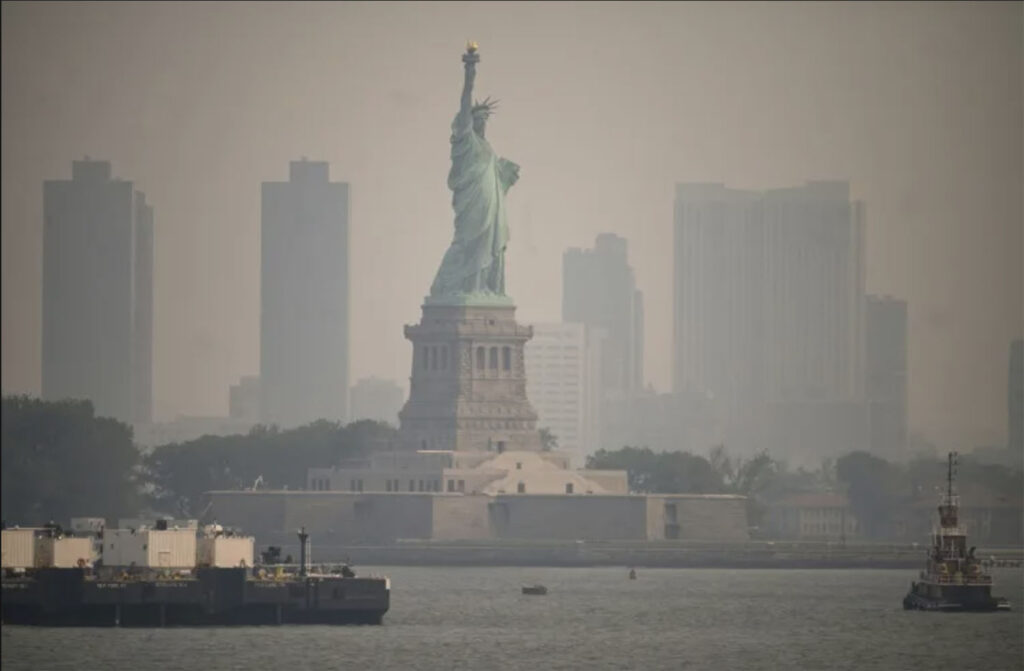By Bella Isaacson, Alliance Intern from Scripps College
Many Americans have been enveloped by Canadian wildfire smoke. Smoke from wildfires contains thousands of individual hazardous compounds, including carbon monoxide, volatile organic chemicals, hydrocarbons and nitrogen oxides. The most prevalent pollutant by mass is particulate matter less than 2.5 micrometers in diameter, roughly 50 times smaller than a grain of sand, says the Earth Island Journal. These particulates pose a serious health danger as they lodge in everyone’s lungs.
What can we do? Most important, check the air quality where you live using this tool provided by AirNow.gov. If your area is in the red zone or darker, there are a few forward steps that you can take to protect yourself and loved ones. First, you can purchase a HEPA air purifier. A HEPA filter – an acronym for High Efficiency Particulate Air [filter] – is able to remove dangerous particulate matter. If you are outside, you can protect yourself by wearing a N95 or KN95 mask that blocks the particulate matter.
Those on the West Coast are no stranger to wildfire smoke wafting through, but to see it on the other side of the country is jarring. Wildfires themselves are not inherently alarming – in fact, they are part of natural cycles, and can be beneficial to ecosystems and biodiversity. However, the severity of wildfires – caused by extreme heat and droughts – can be largely attributed to human-induced climate change.
Canada has had a particularly fierce wildfire season thus far. It has experienced more than a 1400% increase in the number of acres burned for this time of year. About half of these have been started by humans, according to ABC News. Canada’s natural resources agency has said that “climate change could potentially double the amount of area burned by the end of this century with potential economic consequences like lack of timber supply and changes in which tree species make up the majority of forests.”
Unfortunately, it appears that the Canadian fires may not be out for another year. Whether or not there is intense smoke, it’s important to check your air quality and take proper precautions.

